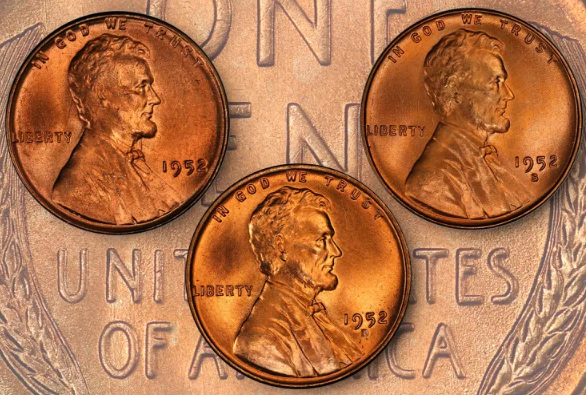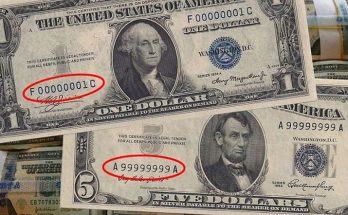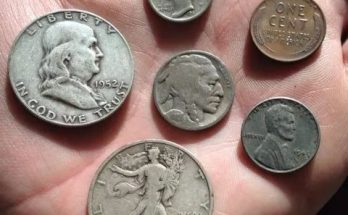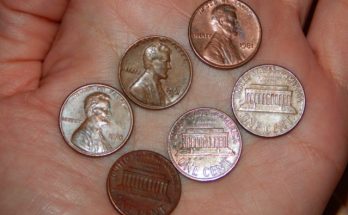The 1952 Lincoln Wheat penny was minted in a year that saw Harry S. Truman as President of the United States, and by the end of the year, Dwight D. Eisenhower was poised to occupy the White House. On the numismatic front, coin collecting was gaining momentum as a hobby and investment strategy. In 1952, Numismatic News was established as a monthly coin-collecting newspaper and coin collecting became a full-fledged American hobby.
The United States Mint had minted the Lincoln Wheat Penny since 1909 when it replaced the Indian Head penny. By 1952, the mint made almost 37 billion Lincoln Wheat cents, meaning these coins were quite common. However, many Lincoln pennies, including the 1952-D Lincoln Wheat Cent, can be worth notable money to coin collectors.
History of the Lincoln Wheat Cent
In 1952, James Earl Fraser, the designer of the Indian Head nickel, created a new design to replace the current Lincoln penny. However, the mint struck pattern pieces and the newly redesigned penny was never adopted.
The mint continued manufacturing Lincoln pennies with the wheat ears on the reverse until 1958. In 1959, the mint changed the reverse to feature a rendition of the Lincoln Memorial in Washington, DC, designed by Frank Gasparro. The Lincoln Memorial reverse continued for fifty years until the mint replaced it in 2009 with the Lincoln Bicentennial series of reverse designs. This one-year circulating commemorative was replaced in 2010 with a reverse design by Lyndall Bass featuring a prominent shield on the reverse.
When first produced in 1909, the coin weighed 3.11 g and was composed of 95% copper and 5% tin and zinc. For one year, in 1943, the US government changed the composition to 100% steel with a thin zinc coating, reducing the weight to 2.7 g. This change was necessitated by the war effort to supply the military with much-needed copper. In 1944, tin was removed from the composition but returned in 1947. By 1982, the cost of copper increased to the point where the mint changed the coin’s composition to a core of 99.2% zinc and 0.8% copper with a thin plating of pure copper. This current version of the Lincoln Wheat Cent weighs 2.5 g.
1952 Lincoln Wheat Penny Errors and Varieties
Because of the sheer volume of mass-produced Lincoln cents, the odds were that there would be a few mistakes. Die varieties abound, including the famous 1955 Lincoln cent doubled die obverse and the 1943 copper pennies. However, 1952 was a year that yielded only one popular die variety in the Lincoln Cent series: the 1952-D D/S Re-Punched Mint Mark (Catalog ID: FS-511). A slight remnant of an “S” on this variety is underneath the “D” mint mark. This variety carries a slight premium over a non-variety specimen.
Grading Your Lincoln Penny
Coin grading is one of the quality measurements used to determine the coin’s value. The problem is that assessing the coin’s grade is not a scientific endeavor but a matter of opinion. However, numismatists have agreed to specific criteria that help place a value on the coin. Lincoln wheat pennies are graded on a scale of 1 to 70. Where 1 is a well-worn and barely recognizable specimen, and 70 is a pristine and perfect example of the coin. You can accurately grade your Lincoln Wheat Penny by spending a little time educating yourself on the grading standards.
Striking Characteristics
The United States Mint manufactured Lincoln Wheat pennies in 1952 at three different facilities: Philadelphia, Denver, and San Francisco. These facilities produced hundreds of millions of Lincoln wheat pennies that year. Although these numbers sound humongous, mint personnel had time to make quality coins, and well-struck examples are easy to find. Additionally, planchets of this date are also of high quality.
Values & Mintages
Although 1952 Lincoln wheat pennies are common, uncirculated and well-struck examples in pristine condition can be worth a few dollars. Circulated examples are occasionally found in circulation today.
| Date & Mint | Mintage | Circ. Buy | Circ. Sell | Unc. Buy | Unc. Sell | |
| 1952 | 186,775,000 | $0.09 | $0.04 | $1.20 | $0.90 | |
| 1952-D | 746,130,000 | $0.09 | $0.04 | $0.90 | $0.70 | |
| 1952-S | 137,800,004 | $0.09 | 0.04 | $2.20 | $1.50 | |
| 1952 Proof | 81,980 | n.a. | n.a. | $42.00 | $30.00 |
Auction records
Although the 1952 Lincoln Wheat penny is a fairly common coin, some uncommon specimens have been sold at auction. Here are the top ten auction records for the 1952 Lincoln Wheat penny:
- $9,775 – November 2007; David Lawrence RC; MS67 (PCGS)
- $6,463 – April 2015; Heritage Auctions; MS67+ (PCGS)
- $6,325 – September 2008; Heritage Auctions; MS67 (PCGS)
- $6,325 – May 2005; Heritage Auctions; MS67 (PCGS)
- $5,980 – August 2006; Bowers & Merena; MS67 (PCGS)
- $5,800 – March 2012; eBay; MS67 (PCGS)
- $5,290 – August 2009; David Lawrence RC; MS67 (PCGS)
- $5,100 – January 2004; Superior Galleries; MS67 (PCGS)
- $5,060 – January 2005; Heritage Auctions; MS67 (PCGS)
- $4,994 – April 2014; Heritage Auctions; MS67 (PCGS)



